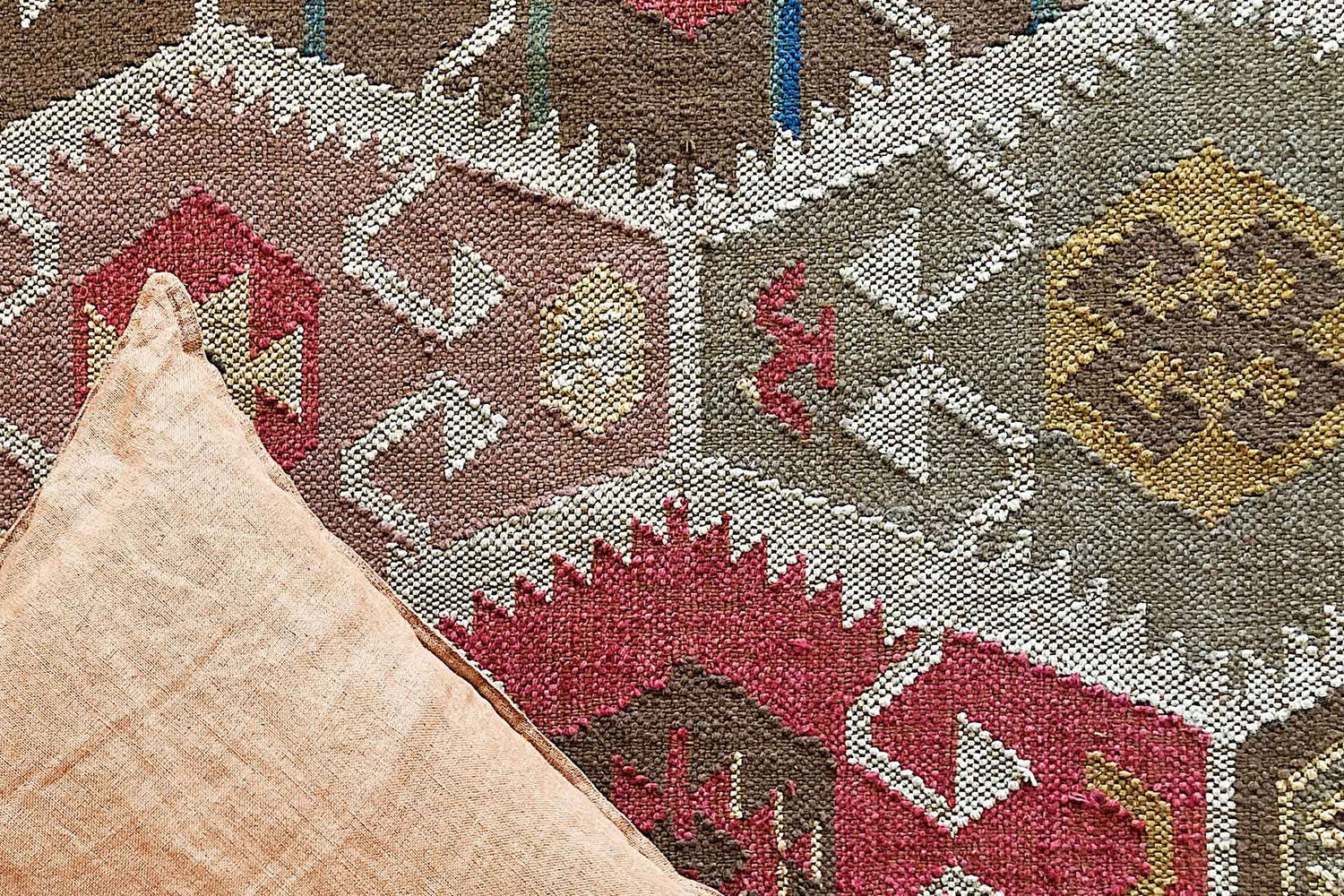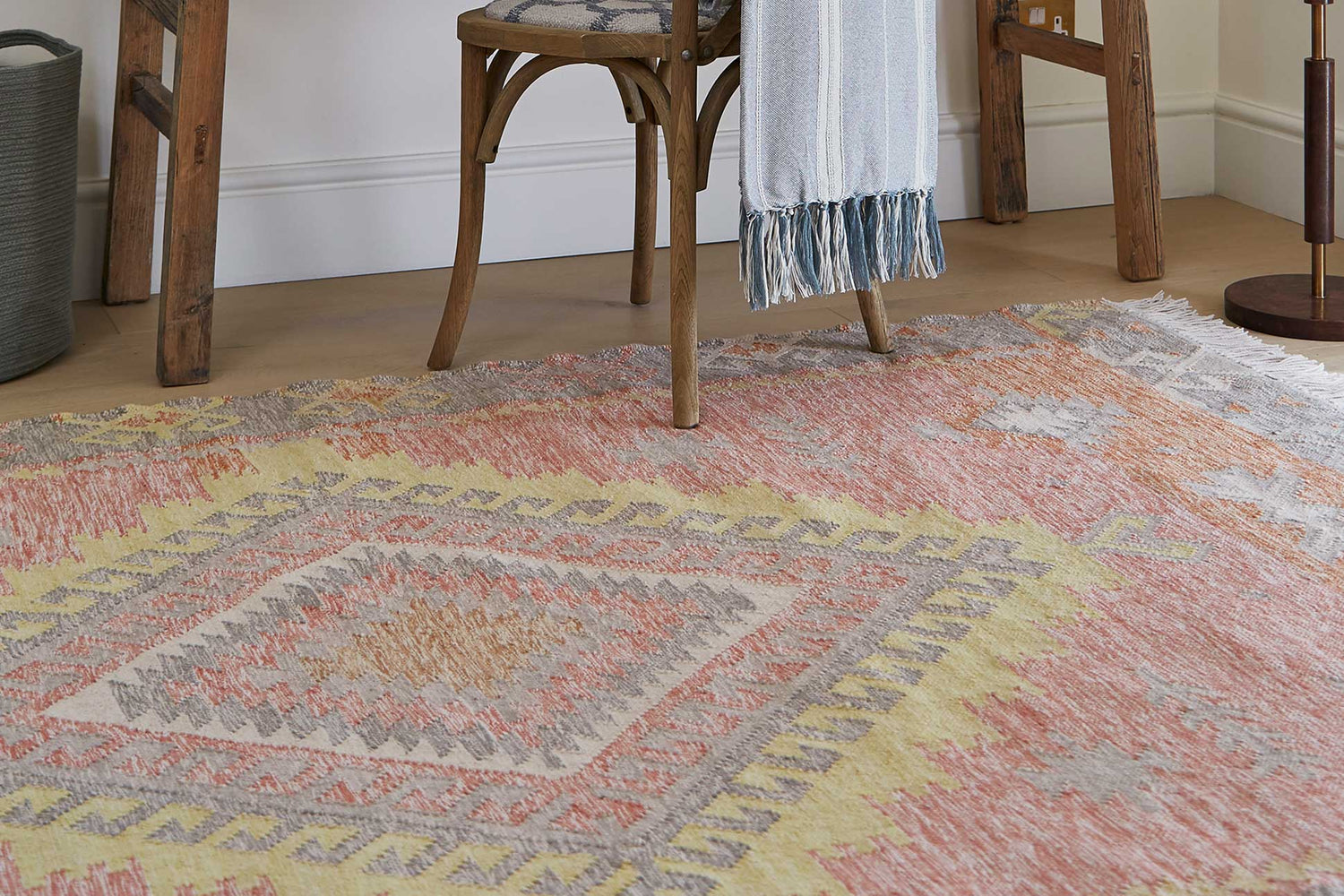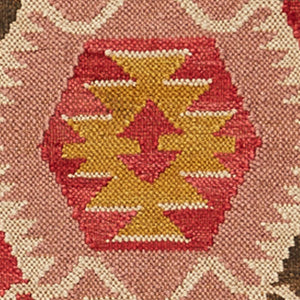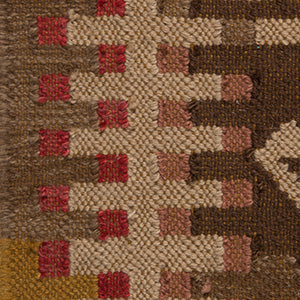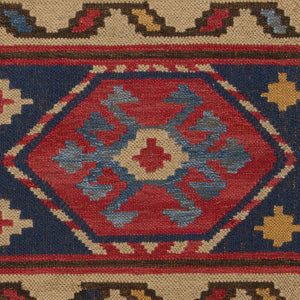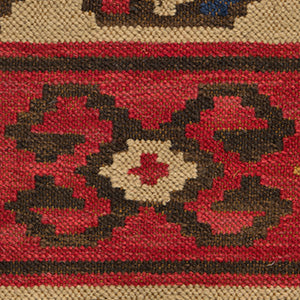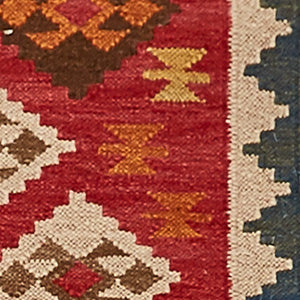The secret language of kilim weaves
Kilim is a love to die for
A woven flag against the enemy
Brilliant hands touched its yarn
Woven on looms with love
Kilim is the flower, the gazelle, the lions
Turkish folk song, from Language of My Soul, Colour of My Words, Anatolian Carpet a documentary by photojournalist Coskun Aral
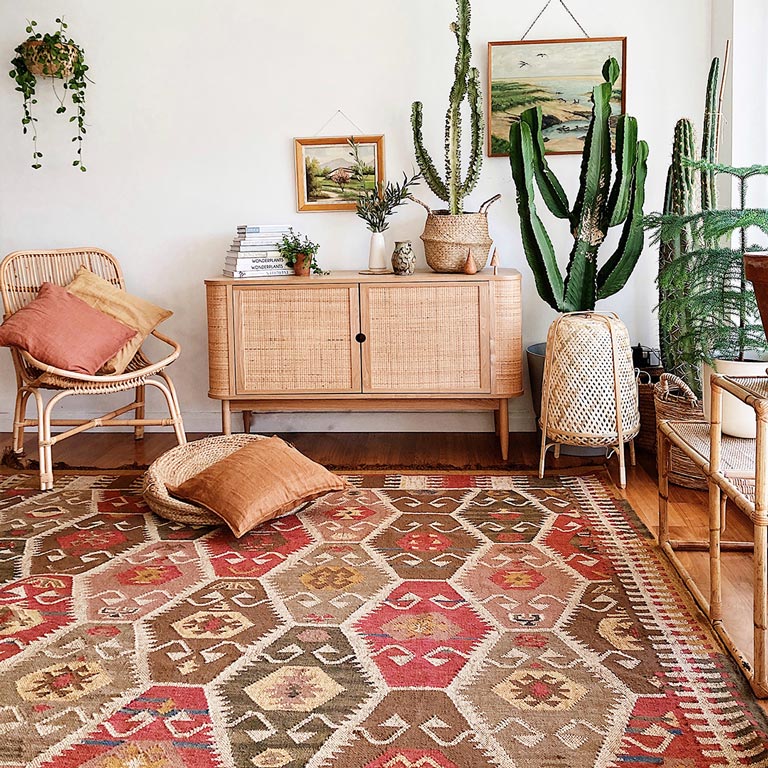
A kilim weave transcends functional craft; bonding weaver to owner via repeated patterns and markings. “Those who know the language of kilim read it like a story that its weaver tells,” says Üzeyir Ozyurt in his book: The Language of Kilim of Anatolia. “As a mirror, the kilim reflects the life of its weaver and the culture of the group to which she belongs.”
What is kilim?
Its geometric style and rich colour palette frequently pop up in design magazines, and on Pinterest and Instagram. But what exactly is kilim? Rhia Davenport, founder of Weven, a workshop hub in Gloucestershire devoted to traditional crafts says: “Kilim dates back over 8,000 years, and is a type of flat weaving, like a tapestry, with no pile. The design is the same on the front and back – so it can be used for multifunctional items like rugs and curtains”.
Such longevity and desirability depends on the bonds woven in warp and weft, but also its attractive and versatile design. “Killim works for anything from a country house aesthetic to mid-century modern. Its tribal beauty will never go out of fashion,” says Upholsterer and kilim expert Joby R Smith.
Kilim has a rough-hewn handcrafted charm. In its early incarnations, weavers may have run out of wool or dye, and had to improvise with scraps of yarn. Every mismatched stitch tells a story about its creator’s set up. In his book A Nomad’s Art Kilims of Anatolia, Sumru Belger Krody writes: “Colour, composition, and size make these textiles captivating to today’s viewers, but Anatolian kilims hold importance far beyond their contemporary visual impact. Most importantly, they are the only surviving, tangible evidence of their makers’ nomadic lifestyle”.
Each rug holds a history, a story.
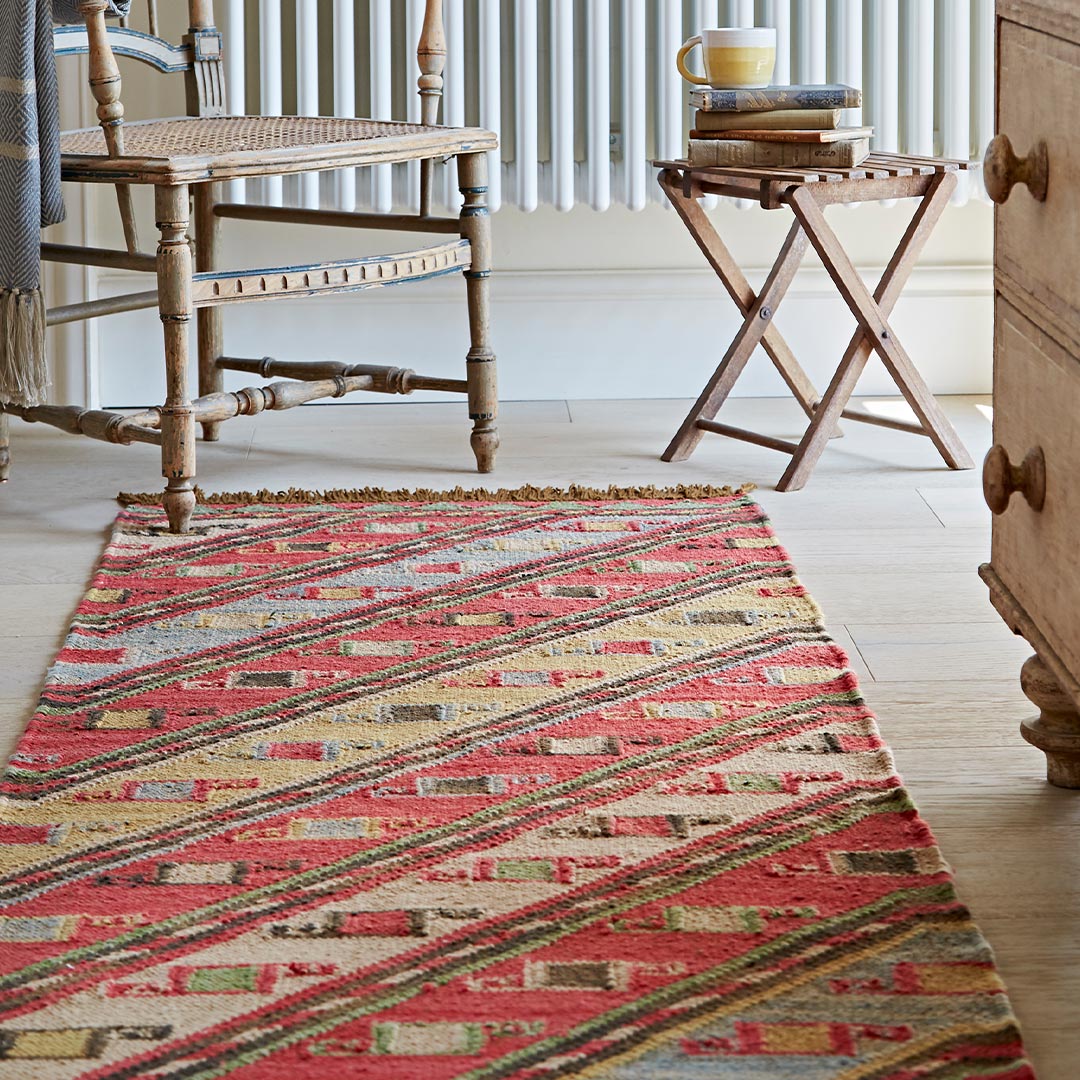
History
Experts are quick to point out that the precise origin of kilim is unknown – and can be a thorny issue. It is generally agreed that the craft was created by nomads in the region of Anatolia (the peninsula that makes up the Asian side of Turkey). But many countries across the Middle East and beyond adopted it at around the same time, each adding their own flair. As Joby R Smith explains: “There are flat weave rugs from all over the world such as Moroccan Berbers to Indian durries and Balkan kilims”.
It is believed that the nomadic people used kilim for tent trappings, yurt insulation, and luggage for migration, and that it played a pivotal role in nomadic communities, especially for the female weavers who made them. In Language of My Soul, Colour of My Words, Anatolian Carpet, artisans from across Turkey, who have made kilims for decades and learned their skills from older female relatives, share their stories.
Its producer, Muge Aral explains: “The older generation told us that every house had a loom, that people never stopped weaving. The Yuruk tribe is one of the only few families that continue to migrate. They still own the sacks and tents woven from goat hair. Their carpets are unique and light, a need for a nomadic life, in order to be carried on camels”.
The artisans featured in the film suggest that fertility, marriage, birth and rebirth are common themes found in the motifs. And that kilim is an art form infused with emotion, pain, and joy. One weaver says: “The beating of your heart has to match the beating of your comb. Weaving is not possible without feelings”.
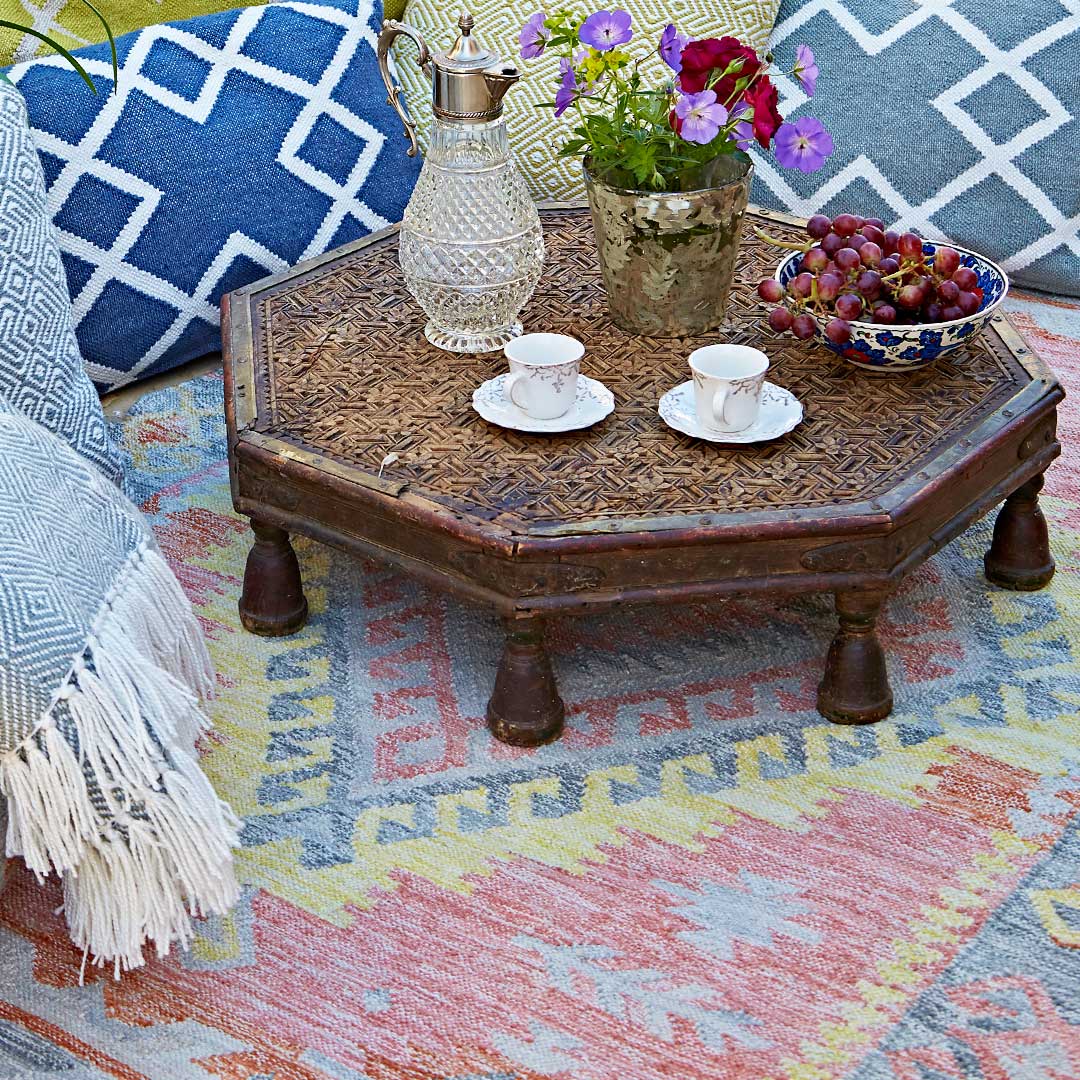
Women’s voices
Through kilim, Anatolian women could learn a skill that would provide for their families. Rugs and furnishings were also used as part of their dowry: the finest items becoming tools to improve a woman’s marriage prospects. Some believe that the motifs handed down from mother to daughter contain aspirations and signs of fortune and wealth. That weaving was their power, their freedom, and their language.
For Sumru Belger, preserved ancient kilims are a “remarkable legacy” considering that the original female creators “did not know how to read or write, let alone have formal arts education". He adds: "They lived in a patriarchal society in which women generally did not have any external voice”. It’s ironic, he says that despite this, it is “their work, and no other lasting cultural manifestation, that gives testament to their centuries long way of life”.
Tools and materials
“The looms used by nomadic tribes were horizontal floor looms, which were easy to transport and work at anywhere,” says Rhia Davenport. Original tools included a comb, made from wood, metal, bone or horn, used to beat down the lines of wefts, so that the next lines could be tightly woven. And a shuttle, which helped weavers thread the weft thread through alternate warps to produce a weave.
Wool was a popular material for weavers due to its ability to take on dyes and once bountiful supply. Cotton was also chosen for its strength and availability. While animal hair such as goat, camel or horse added strength and created decorative tassels and fringes. Some bridal kilims used silk, which was seen as a status symbol, and occasionally beads were interwoven into the designs.
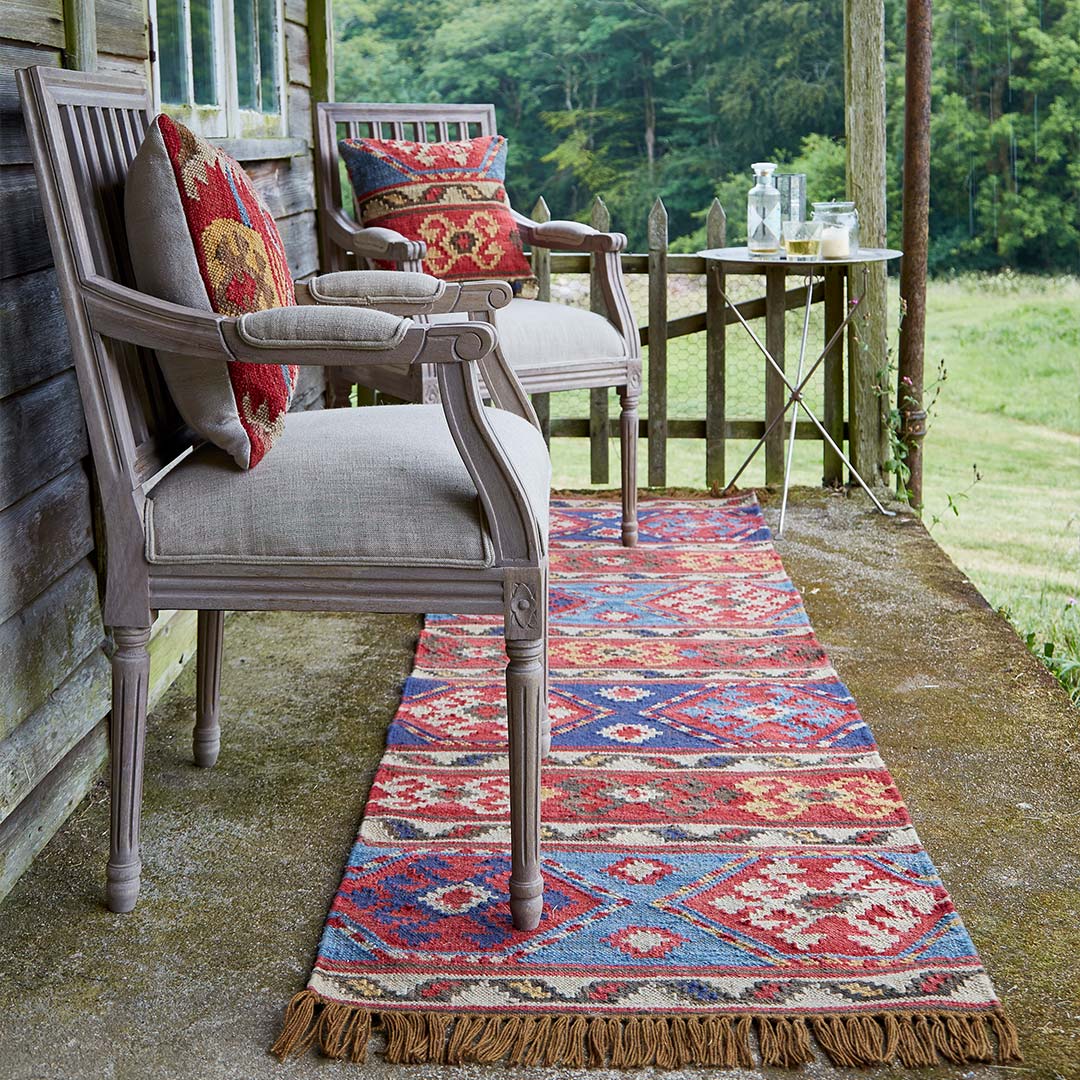
Motifs and symbols
The language of kilim is not easily translated. Each pattern was copied from another, a stitch lost or added here and there.“The patterns have meanings which were communicated from mother to daughter. These changed as each weaver added their own twist,” says Rhia Davenport. “Researchers have tried to relate the shapes to various symbols, but the folklore and tribal traditions that are woven into these items are often lost.” Modern interpretations, therefore, are best read with a degree of cynicism. Common motifs include:
Comb - Some experts believe this is used to express a desire to get married, and to protect birth and marriage against the evil eye.
Hook - An Anatolian motif used to ward off the evil eye. It was commonly used on stockings and symbolises marriage.
Elibelinde - Known by several names throughout Anatolia, this interpretation of the female form represents motherhood and fertility.
Tree of Life - Anatolians used a cypress tree to symbolise life cycles and the afterlife. The symbol is also used on gravestones.
Eye - There are several forms of the eye motif, which symbolises protection from the evil eye, or Nazar Boncuk – an envious look from others which had the power to cause misfortune.
Source: kilim.com
Kilim motifs found in Weaver Green rugs
Continuing the legacy
Despite the apparent abundance of kilim-style rugs and furnishings seen in interiors’ magazines and online, today’s world is a harsher environment for traditional craftsmanship. “Time is fast in this era and many people don’t care for these pieces that take months or even years to weave,” says Muge Aral. “Looms are forgotten in barns, weavers can not earn enough money. For them there is no logic of continuing weaving, it takes time, natural dyed wool is expensive, they don’t have any social security and they can’t sell the carpets or kilims for their worth.”
But its fascinating history and cultural context has inspired many young people to take part in workshops to learn the ancient skills passed through so many generations. Perhaps a slowness, and an appreciation for storied, quality craft can be celebrated and relearned.
To help secure a future for this beautiful dying craft, Weaver Green uses 25 looms to make traditional hand-woven kilim designs. It celebrates artisan skills, supports hand-weavers and protects traditional techniques. While its innovative yarn technology increases practicality, and tells a real sustainability story. 2023 see the launch of 15 new kilim designs. All will be hand-woven, made from 100% recycled plastic (PET) yarn, and 100% recyclable at the end of their useful lives.

